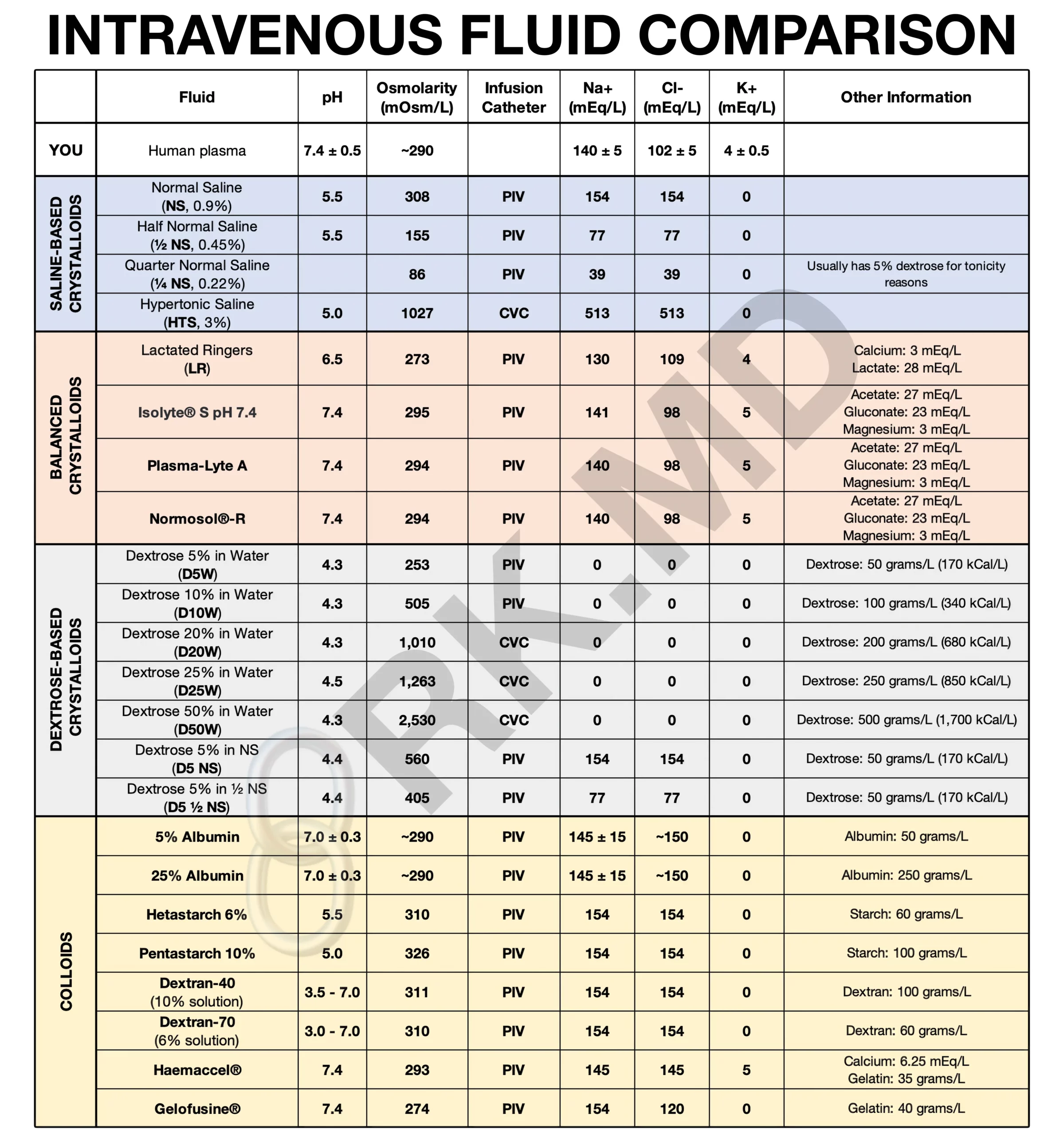Intravenous (IV) fluids are ubiquitous in medicine. Crystalloid fluids consist of electrolytes and/or dextrose. They are traditionally used to replace ongoing fluid losses, hydrate patients who cannot tolerate enteral intake, reconstitute medications, etc. Colloids contain larger molecular weight substances such as albumin and starch for low oncotic pressure (although their justified clinical use is highly controversial).
One of the most difficult questions in critical care is, “how much fluid is inside the blood vessels” of any patient? Oftentimes, patients are total body volume overloaded but intravascularly dry. In patients who are volume responsive, the type and amount of fluid to administer can vary tremendously based on the situation and extends beyond the scope of this post.

I’ve created a table showing the common crystalloids and colloids and their primary components. In an upcoming version, I’ll discuss situations I use these fluids, contraindications, and areas of debate. Keep in mind that the numbers in the table can vary!
Drop me a comment below with questions and experiences regarding intravenous fluid administration.






Rishi, this is a wonderful chart! May I use this table in a presentation I am giving, as long as I give you credit in the talk and reference your website?
Sure, thanks for asking!
Great overview!!!
I appreciate it! 🙂